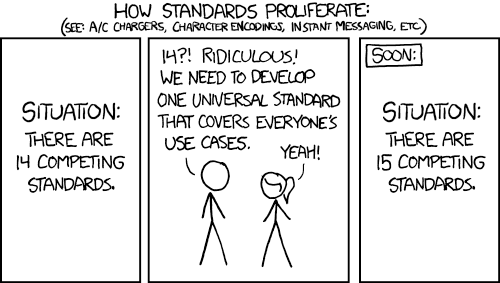this post was submitted on 10 Jul 2023
962 points (99.9% liked)
Programmer Humor
35426 readers
5 users here now
Post funny things about programming here! (Or just rant about your favourite programming language.)
Rules:
- Posts must be relevant to programming, programmers, or computer science.
- No NSFW content.
- Jokes must be in good taste. No hate speech, bigotry, etc.
founded 5 years ago
MODERATORS
you are viewing a single comment's thread
view the rest of the comments
view the rest of the comments

The point is that manufacturers can screw up standards and being a symmetrical connector does not cure idiocy in the heads if some people. Yes, the standard explicitly says you have to short opposing data lines for 2.0, but that does not mean everybody will comply with it. (The author of the video is not an idiot, they just demonstrated that it's possible)
The most common example of this I can think of right away is male-male connectors with type A USB. They are explicitly prohibited, yet many manufacturers create them and use in their products.
That's why I said that no standard can protect you, you're just relying on people not being dumb and actually reading the paper you published.
Right, I see your point, thank you for clarifying :)
That being said, unlike the male-to-male example, where I personally don’t understand why the spec prohibits it, I think it’s pretty obvious why consumers want USB-C. The Internet is awash with memes about inserting USB three times, etc.
I think there’s a vast difference between “why is male-male banned? Heck it, I’ll create one as it serves our use case” and “I’m going to negate the only consumer-facing advantage USB-C has for no real reason”. Yes I know C has many other benefits but the common denominator doesn’t care about any of that.
If you have two devices with female USB A ports that both provide power via said ports, connecting them with male-male cable ~~will create a short circut. Best case scenario: a current protecting fuse breaks the circuit. Worst case: both processors on both motherboards are dead.~~ Better not think you can connect two computers with that evil thing. That's why type B connector exists, it's about the same size, but it never connects to a port that provides power.
Aha I see, thank you for explaining :)
A slight word of correction, looked at the pinning again, it won't short circuit them, but one will try to charge the other. It will still be a fire hazard, just not as violent.